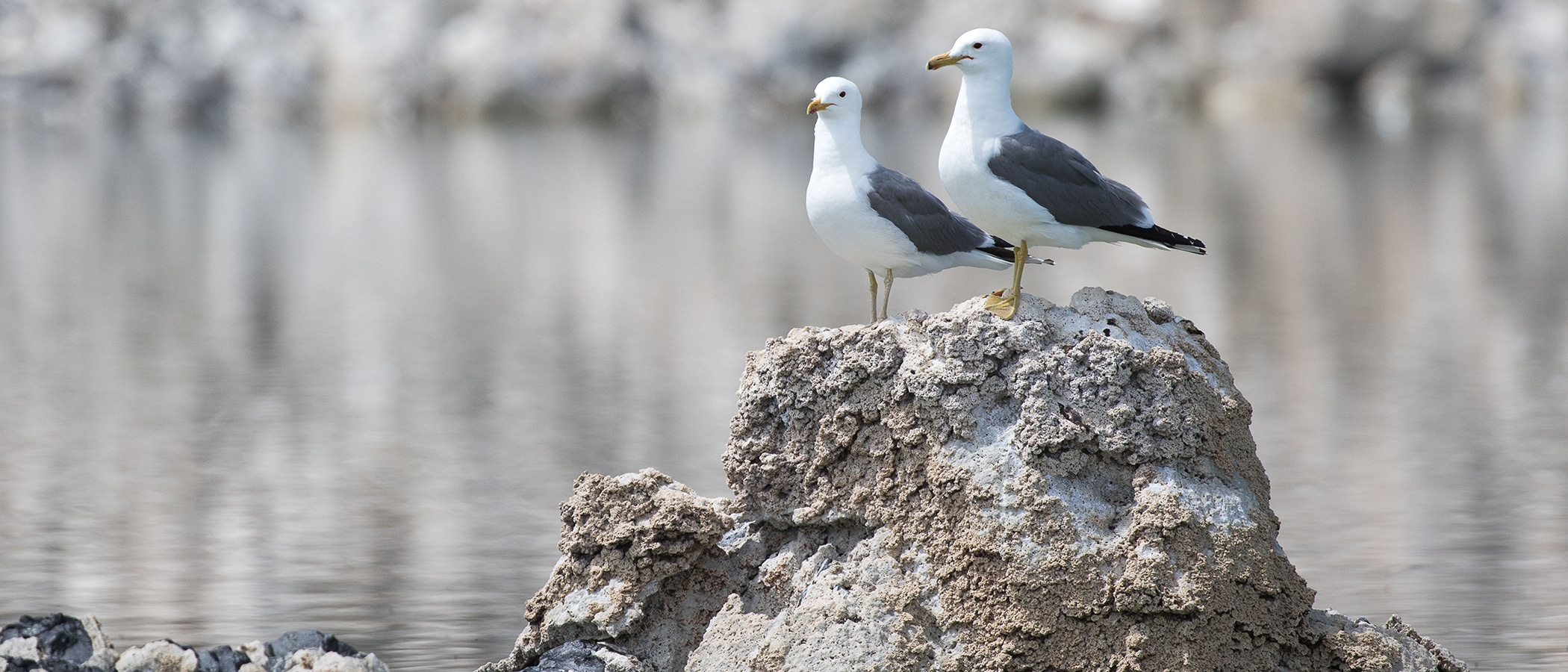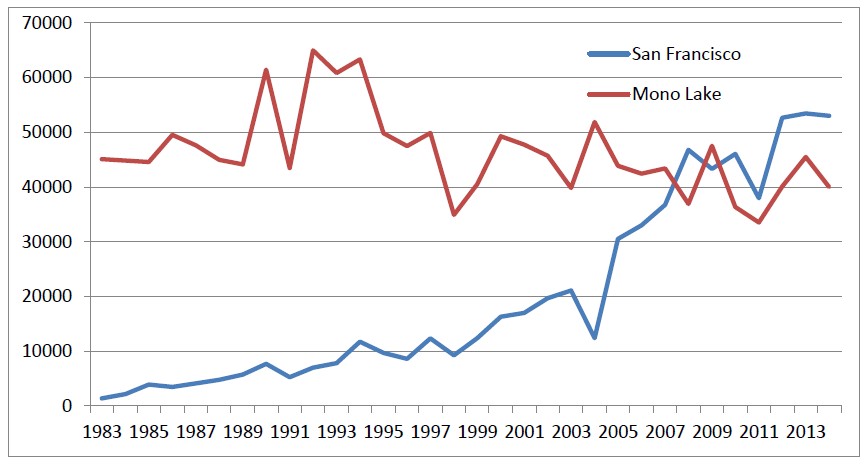
Point Blue Conservation Science has completed its report on the 2014 California Gull nesting season at Mono Lake, which is available on the Mono Basin Clearinghouse.
The gull population in 2014 was low. This was to be expected, since 2010 was the year with the lowest reproductive success ever recorded, and the 2010 cohort returns as adults four years later. Due to the decline in lake level, Old Marina Islet became a peninsula, which represents a loss of nesting habitat for 7% of the gull population. Luckily, beneficial weather and lake conditions allowed reproductive success to be above average, which kept the low population factors from making the season’s totals turn out lower.
Last year’s low gull population comes in the context of a long-term decline in California Gull numbers at Mono Lake, and a rapid increase in the south San Francisco Bay. There is some indication that Mono Lake gulls are moving to the Bay, since the Bay population is growing so fast it must be subsidized by incoming birds from somewhere else. Since 2008, San Francisco Bay California Gull numbers have been higher than those at Mono Lake, and were 33% higher in 2014.

Top photo courtesy of Point Blue Conservation Science.

